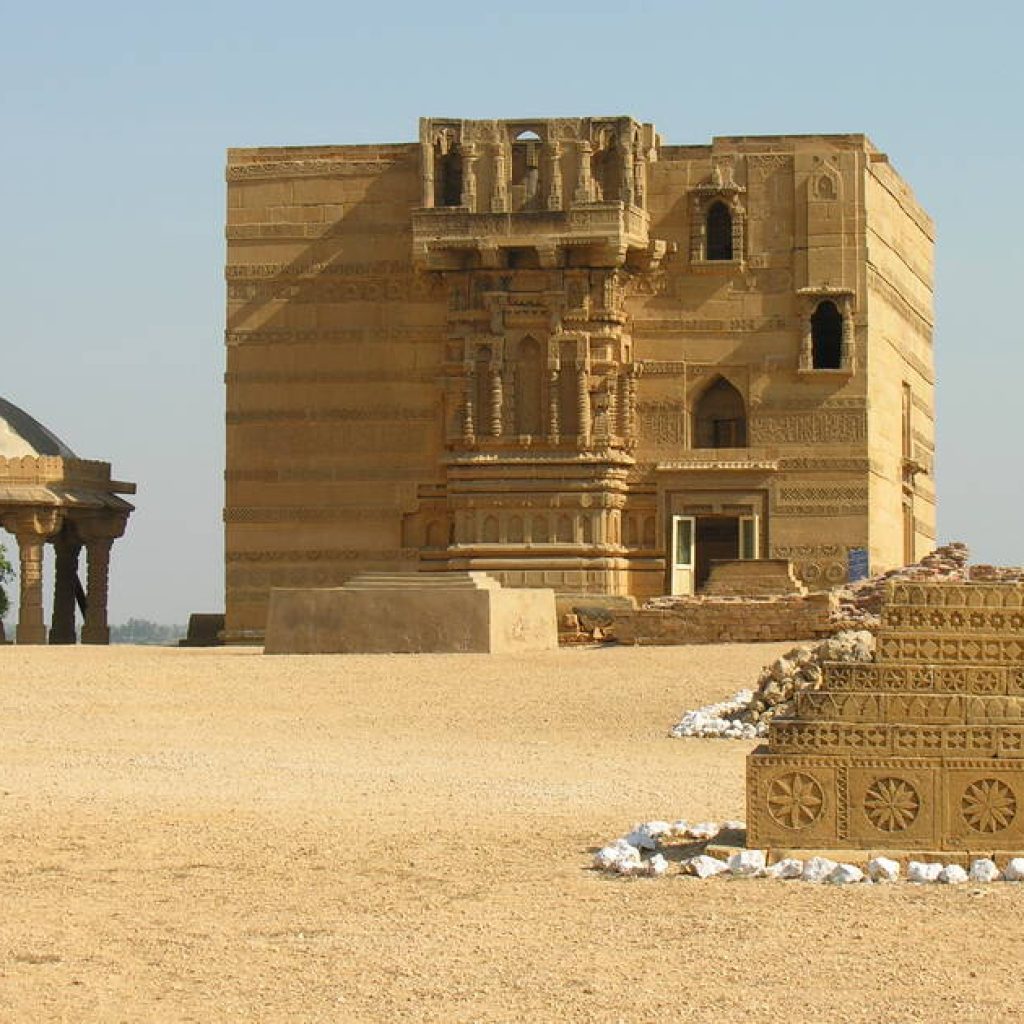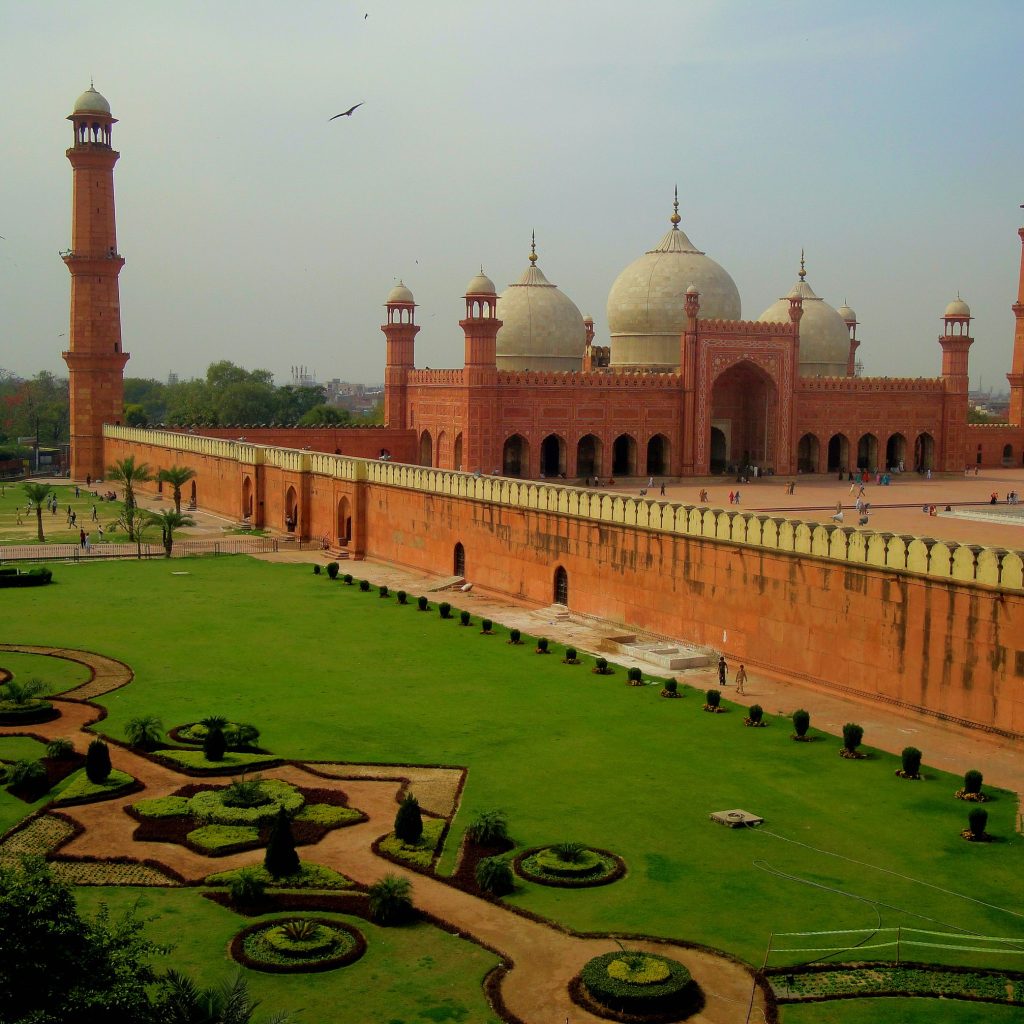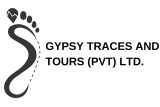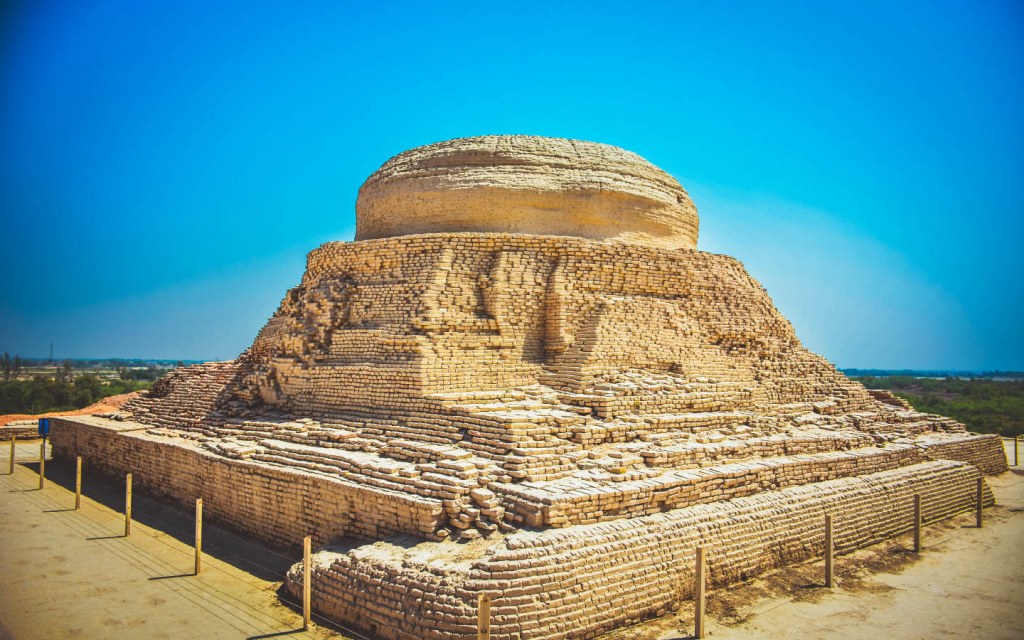Four ancient civilizations, Mesopotamia, Egypt, the Indus Valley, and China are regarded as the mother of all known civilizations. Pakistan being part of the Indus civilization stands at the crossroads of civilizations and the archaeological remains are the physical evidence of those rich cultural heritages. Pakistan stands at the confluence of “East and West” and “South and North” and the ancient as well as modern world powers have always taken keen interest in the geographical possession of this territory now called ‘Pakistan’. This interplay of civilizational rivalry and contesting powers has left their footprints on the mosaic of Pakistan’s rich cultural cum architectural heritage. Pakistan has six declared UNESCO heritage sites and another 25 UNESCO tentative heritage sites as following: –


Table of Contents
UNESCO Heritage Sites – Pakistan (6 Sites)
- Archaeological Ruins at Mohenjo-Daro, Sindh
- Taxila, Punjab
- Buddhist Ruins of Takht-i-Bahi and Sahr-i-Bahlol, Khaybar Pakhtunkhwa
- Historical Monuments at Makli Thatta, Sindh
- Fort and Shalimar Gardens – Lahore, Punjab
- Rohtas Fort – Jhelum, Punjab
1) Archaeological Ruins at Mohenjo-Daro, Sindh
Mohenjo – Daro the metropolis of Indus civilization, which flourished between 2,500-1,500 BC in the Indus valley and is one of the world’s great ancient civilizations. The Archaeological Ruins comprise burnt brick structures.
Year Listed: 1980
2) Taxila, Punjab
The ruins of the four settlement sites at Taxila reveal the pattern of urban evolution on the Indian subcontinent through more than five centuries. Taxila illustrates the different stages in the development of a city on the Indus that was alternately influenced by Persia, Greece and Central Asia and which, from the 5th century B.C. to the 2nd century A.D., was an important Buddhist centre of learning.
Year Listed: 1980
3) Buddhist Ruins of Takht-i-Bahi and Sahr-i-Bahlol, Khaybar Pakhtunkhwa
The Buddhist Ruins of Takhi-i-Bahi (Throne of Origins) are a monastic complex, founded in the early 1st century A.D., is spectacularly positioned on various hilltops ranging from 36.6 metres to 152.4 metres in height, typical for Buddhist sites.
Sahr-i-Bahlol, is located approximately 5 km away in a fertile plain. The Sahr-i-Bahlol ruins are the remnants of a small ancient, fortified town of the Kushan period.
Year Listed: 1980
4) Historical Monuments at Makli Thatta, Sindh
The capital of three successive dynasties and later ruled by the Mughal emperors of Delhi, Thatta was constantly embellished from the 14th to the 18th century. The Thatta remains of the city and its necropolis provide a unique view of civilization in Sindh.
Year Listed: 1981
5) Fort and Shalimar Gardens – Lahore, Punjab
These are two masterpieces from the time of the brilliant Mughal civilization, which reached its height during the reign of the Emperor Shah Jahan. The fort contains marble palaces and mosques decorated with mosaics and gilt. The elegance of these splendid Shalimar gardens, built near the city of Lahore on three terraces with lodges, waterfalls and large ornamental ponds, is unequalled.
Year Listed: 1981
6) Rohtas Fort – Jhelum, Punjab
Rohtas Fort, also called Qila Rohtas, is an exceptional example of early Muslim military architecture in Central and South Asia. Following his defeat of the Mughal emperor Humayun in 1541, Sher Shah Suri built a strong fortified complex at Rohtas, a strategic site in the north of what is now Pakistan. It was never taken by storm and has survived intact to the present day.
Year Listed: 1997
UNESCO Tentative Heritage Sites – Pakistan (25 Sites)
1) Badshahi Mosque Lahore Punjab
Constructed between 1671 and 1673, it is the fifth largest mosque in the world. Commissioned by Mughal Emperor Aurangzeb. 100000 worshipers can offer prayer at one time here. It follows the Persian architectural style, where red sandstone and white marble has been used in the construction.
Year Listed: 1993
2) Wazir Khan Mosque Lahore Punjab
It is Persian architectural style mosque that was constructed between 1634 and 1641. It was the most ornately decorated mosque in Mughal era. Commissioned by Mughal Emperor Shah Jehan. It also included a Shahi Hamam (Bath). It is renowned for its Kashi-Kari (intricate faience tile). The mosque has been restored by the ‘Aga Khan Culture Service Pakistan” and ‘Government of Punjab”.
Year Listed: 1993
3) Tombs of Jahangir, Tomb of Asif Khan and Akbari Sarai, Lahore Punjab
Tombs of Jahangir is located in Shahdara Bagh, northwest of the walled city of Lahore. Laid out in 1557 and later in 1645 the Tomb of Asif Ali was added to it. In 1637 Akbari Sarai was also built here.
Year Listed: 1993
4) Hiran Minar and Tank, Sheikhupura, Punjab
Hiran Minar was built in 1606 by Mughal Emperor Jahangir in the memory of his beloved antelope named Mansraj.
Year Listed: 1993
5) Tomb of Shah Rukn-e-Alam Multan, Punjab
It is the mausoleum of the 14th century Sufi Sheikh Rukn-ud- Din Abul Fateh. It was built between 1320 and 1324 by Ghiyath al Din Tughluq.
Year Listed: 1993
6) Rani Kot Fort, Dadu Sindh
Ranikot Fort is a historical Talpur fort is located in Sunn Town of Jamshoro District Sindh. With a circumference of 32 km the boundary wall of this fort is also known as “The Great Wall of Sindh” and it was built in 1819 by Nawab Wali Muhammad Khan Laghari.
Year Listed: 1993
7) Shah Jahan Mosque, Thatta Sindh
Shah Jahan Mosque, also known as Jamia Masjid is located in Eastern Thatta in the province of Sindh. This Mosque was built during the reign of Mughal emperor Shah Jahan.
Year Listed: 1993
8) Chau Khandi Tombs, Karachi Sindh
These historical tombs are situated 29 km east of Karachi. They were built during Mughal rule .These tombs are burials of mostly Baloch tribe. They are unique because of exquisite stone carvings.
Year Listed: 1993
9) Archaeological Site of Mehrgarh, Baluchistan
Mehrgarh is located near Bolan at a distance of 130 kilometres from Quetta and this place is even older than Mohenjodaro. Mehrgarh was discovered by archaeological team headed by French archaeologist Jean-François Jarrige in 1974.
Year Listed: 2004
10) Archaeological Site of Rehman Dheri, Khaybar Pakhtunkhwa
Rehman Dheri is located near Dera Ismail Khan in the Khyber Pakhtunkhwa province of Pakistan. Rehman Dheri represents one of the oldest urbanized centers found to date in South Asia. This site was first explored by Professor Ahmad Hassan Dani in 1971.
Year Listed: 2004
11) Archaeological Site of Harappa, Punjab
Harappa is located in west of Sahiwal district of Punjab province. It is one of the earliest civilizations of the world. It is a center of earliest urban culture.
Year Listed: 2004
12) Archaeological Site of Ranigat, Khaybar Pakhtunkhwa
Ranigat is located in Tehsil Totalai, District Buner, N.W.F.P. This site is located on top of a hill. This site belongs to Gandahara civilization and this is 2500-year-old Buddhist archaeological site.
Year Listed: 2004
13) Shahbazgarhi Rock Edicts, Khaybar Pakhtunkhwa
The Shahbazgarhi Rock Edicts are ancient rock inscriptions that are located in the village of Shahbazgarhi in the Peshawar valley. The language used in these inscriptions is Gandhari Prakrit. Theses rock edicts are evidence of writing in south Asia.
Year Listed: 2004
14) Mansehra Rock Edicts, Khaybar Pakhtunkhwa
Mansehra Rock Edicts are located near the city of Mansehra. They are fourteen edicts of the Mauryan emperor. They represent the evidence of writing in South Asia.
Year Listed: 2004
15) Baltit Fort, Gilgit Baltistan
Baltit fort is a 700-year-old fort situated near Karimabad in Hunza Valley. Rulers of the state inhibited there until 1945. This is a three story structure made up of wood, stone and mud plaster supported by a high rock.
Year Listed: 2004
16) Tombs of Bibi Jawindi, Baha’al-Halim and Ustead and the Tomb and Mosque of Jalaluddin Bukhari, Punjab
The tomb of Bibi Jawandi was built by an Iranian prince in 1493 for Bibi Jawindi .It is one of the five monuments in Uch Sharif, Punjab. Baha’al-Halim is an Islamic tomb. Mosque of Jalaluddin Bukhari is in Uch sharif.
Year Listed: 2004
17) Port of Banbhore, Sindh
Port of Banbhore is the ruined town which is located on the Northern Bank of Gharo Creak.It is the historical city of Debal.
Year Listed: 2004
18) Derawar and the Desert Forts of Cholistan, Punjab
It is located in Ahmadpur East Tehsil, Punjab, Pakistan. Derawar fort was built by Rai Jajja Bhatti (a Rajput ruler of Bhatti clan) in the 19th century.
Year Listed: 2016
19) Hingol Cultural Landscape, Baluchistan
It is an ancient landscape located in Hingol National Park on the Makran coast of the Arabian Sea and it is approximately 190 km west of Karach. Hingol Cultural Landscape is an important Hindu pilgrimage site.
Year Listed: 2016
20) Karez System Cultural Landscape, Baluchistan
Karez System is an example of ancient and still functional technology and it is believed to have originated in the 1st millennium BC in Persia. Karez is an indigenous source of irrigation in Balochistan.
Year Listed: 2016
21) Nangarparkar Cultural Landscape, Sindh
Nangarparkar Cultural Landscape is situated in Southeastern Pakistan. It has abandoned Jain temples and it is important place for Jainism religion and culture.
Year Listed: 2016
22) Central Karakoram National Park, Gilgit Baltistan
Central karakoram National Park is the largest National park of Pakistan. It was established in 1993 in Gilgit Baltistan. This Park covers an area of 1000000 hectares.
Year Listed: 2016
23) Deosai National Park, Gilgit Baltistan
Deosai National Park is located in Astore, Gilgit Baltistan. The Deosai National Park was established in 1993 and internationally it is recognized as important site for protection and conservation of the Himalayan brown bear which is an endangered species.
Year Listed: 2016
24) Ziarat Juniper Forest, Baluchistan
Ziarat Juniper Forest is located in the province of Balochistan. This forest is believed to be the world’s second largest forest of its kind. It covers an area of 110,000 hectares.
Year Listed: 2016
25) The Salt Range and Khewra Salt Mine, Punjab
Salt ranges are located near Khewra that covers approx 2,500 sq km area. This is an area rich with variety of salts and minerals. It is Pakistan’s oldest and largest salt mine and it is world’s second largest mine.
Year Listed: 2016
Pakistan Best Selling Tours Packages 2023
Taxila Heritage Sites Tour — Taxila Museum
Suggested Reads
Why should you visit Chitral Valley?
Why should you visit Hunza Valley?


0 Comment